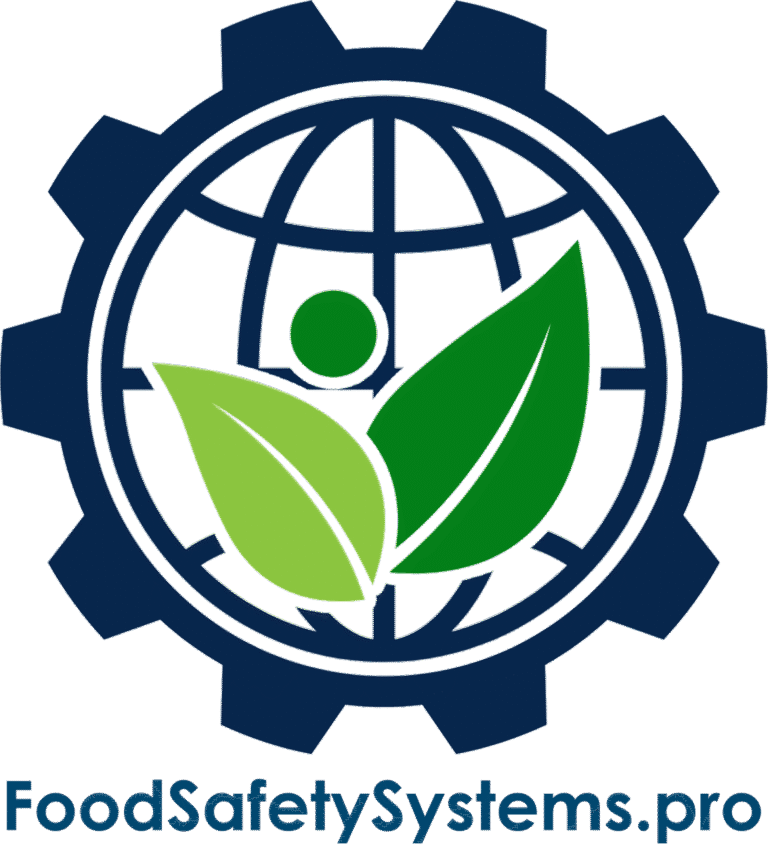Validation & Verification of Control Measures
Aligned with SQF Code Edition 9 – System Element 2.10.2
Requirement Overview
SQF Code Edition 9, System Element 2.10.2, states:
“Control measures, including Critical Control Points (CCPs), operational prerequisite programs (OPRPs), and other food safety controls, shall be validated and verified to ensure they achieve the intended food safety outcome.”
Validation confirms that your controls can effectively prevent or minimize food safety hazards. Verification ensures they are consistently applied and functioning as intended.
Disclaimer: Food Safety Systems is not affiliated with or endorsed by the Safe Quality Food Institute (SQFI). This content is intended for educational and compliance guidance only. Please refer to www.sqfi.com for official certification and audit materials.

Key Compliance Objectives
-
✓ Apply scientific validation to all critical and operational control measures
✓ Routinely verify CCPs, OPRPs, and PRPs
✓ Maintain traceable validation records
✓ Engage qualified individuals (e.g., PCQIs) in oversight and review
Step-by-Step Compliance Implementation
1. Identify Controls That Require Validation & Verification
-
Control Categories:
-
• CCPs – e.g., cooking, chilling, metal detection
• OPRPs – e.g., allergen changeover cleaning, weight checks
• PRPs – e.g., sanitation, personal hygiene, pest control
Evidence to Maintain:
-
• Inventory of all food safety controls
• Classification (CCP, OPRP, PRP) and rationale
- • CCPs – e.g., cooking, chilling, metal detection • OPRPs – e.g., allergen changeover cleaning, weight checks • PRPs – e.g., sanitation, personal hygiene, pest control
- • Inventory of all food safety controls • Classification (CCP, OPRP, PRP) and rationale
2. Conduct Scientific Validation Studies
-
Accepted Validation Methods:
-
• Published scientific literature or regulatory standards
• In-plant studies (e.g., challenge or inoculation studies)
•
Third-party testing or industry benchmarks
Evidence to Maintain:
-
• Completed validation studies with documented methodology
•
References used to justify control effectiveness
• Validation sign-off by PCQI or qualified personnel
- • Published scientific literature or regulatory standards • In-plant studies (e.g., challenge or inoculation studies) • Third-party testing or industry benchmarks
- • Completed validation studies with documented methodology • References used to justify control effectiveness • Validation sign-off by PCQI or qualified personnel
3. Verify Control Measures Routinely
-
Routine Verification Includes:
-
• Direct observation of CCP monitoring
• Review of records (e.g., sanitation logs, temperature checks)
• Equipment calibration (e.g., metal detectors, thermometers)
Evidence to Maintain:
-
• Verification logs/checklists
• Equipment calibration reports
• Monitoring activity records
- • Direct observation of CCP monitoring • Review of records (e.g., sanitation logs, temperature checks) • Equipment calibration (e.g., metal detectors, thermometers)
- • Verification logs/checklists • Equipment calibration reports • Monitoring activity records
4. Implement Corrective Action Protocols
-
Triggers for Action:
-
• Deviation from critical limits or procedures
• Validation study failures
• Inadequate verification results
Evidence to Maintain:
-
• Corrective action request (CAR) forms
• Root cause analyses
• Documentation of follow-up and resolution
- • Deviation from critical limits or procedures • Validation study failures • Inadequate verification results
- • Corrective action request (CAR) forms • Root cause analyses • Documentation of follow-up and resolution
5. Review and Revalidate When Needed
-
Revalidation May Be Required After:
-
• Equipment or process changes
• New scientific findings or audit recommendations
• Recalls or serious food safety incidents
Evidence to Maintain:
-
• Revalidation schedule and review log
• Updated control documentation
• Version-controlled validation reports
- • Equipment or process changes • New scientific findings or audit recommendations • Recalls or serious food safety incidents
- • Revalidation schedule and review log • Updated control documentation • Version-controlled validation reports
Common Audit Findings & Recommended Fixes
Audit Finding
Recommended Action
No scientific support for CCP parameters
Conduct or reference formal validation studies
Missing calibration logs for critical tools
Schedule regular calibration and keep logs
PRPs not routinely verified
Implement a verification checklist for all PRPs
Controls not revalidated after process change
Trigger revalidation based on risk-based assessment
| Audit Finding | Recommended Action |
|---|---|
| No scientific support for CCP parameters | Conduct or reference formal validation studies |
| Missing calibration logs for critical tools | Schedule regular calibration and keep logs |
| PRPs not routinely verified | Implement a verification checklist for all PRPs |
| Controls not revalidated after process change | Trigger revalidation based on risk-based assessment |
Auditor Verification Checklist
Auditors will typically:
-
• Review validation protocols and data
• Verify equipment calibration and verification records
• Observe monitoring and verification practices
• Confirm corrective actions and revalidation documentation
Implementation Roadmap
Build Your Program
-
✓ Identify all applicable control measures
✓ Categorize each as CCP, OPRP, or PRP
Train and Validate
-
✓ Conduct or obtain scientific validation studies
✓ Train team on control application and verification
Operate and Monitor
-
✓ Implement scheduled verification activities
✓ Maintain daily logs and calibration records
Improve Continuously
-
✓ Revalidate controls after key changes
✓ Review validation effectiveness annually
Why This Matters?
Validated and verified controls:
-
✓ Provide confidence that food safety hazards are effectively managed
✓ Reduce the risk of non-compliance, product recalls, and legal liability
✓ Strengthen your SQF program and audit performance
✓ Demonstrate a data-driven commitment to food safety
Looking for Support Materials?
Food Safety Systems offers:
-
✓ Validation protocol templates (CCP, allergen, sanitation)
✓ CCP/PRP verification checklists
✓ Calibration record forms
✓ Revalidation and change control logs
Privacy Policy | Terms of Service | Disclaimer
Powered by Consultare Inc. Group, A Compliance Company







